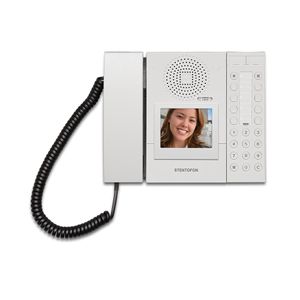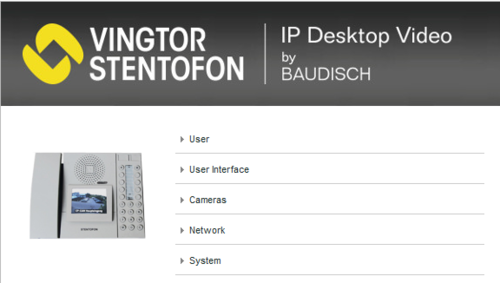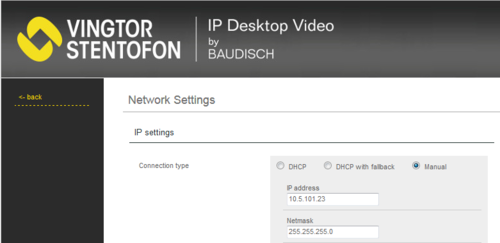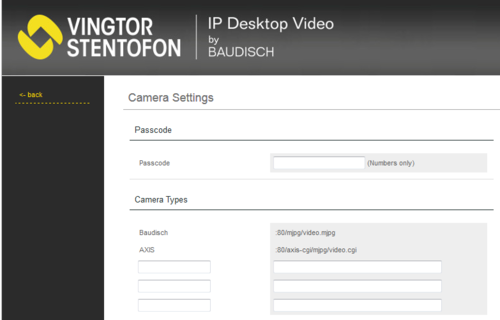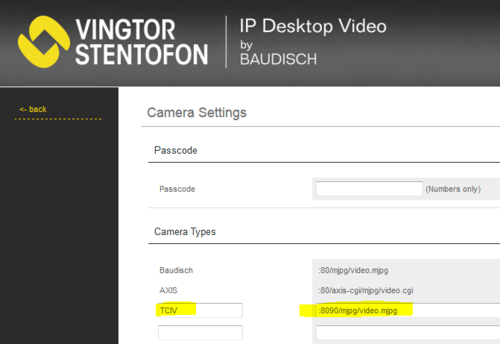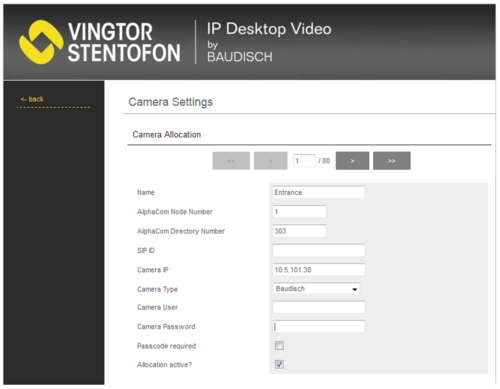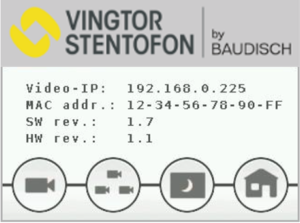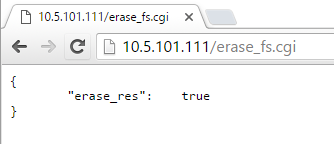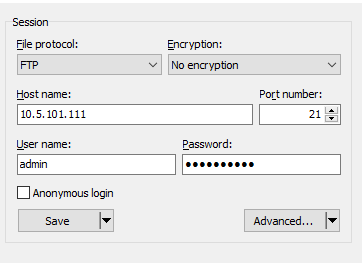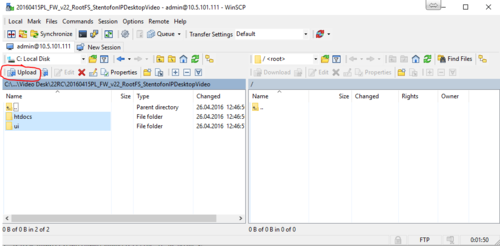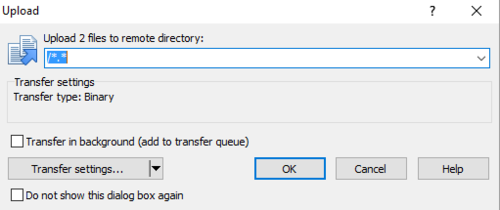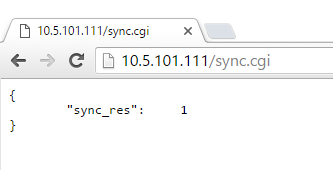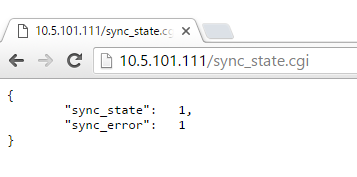IP Desktop Station with Video Display - 1408001635
From Zenitel Wiki
Contents
- 1 Highlights
- 2 Requirements
- 3 Limitation
- 4 InterCom connections
- 5 Main Setup
- 6 IP Station Configuration
- 7 Software upgrade
- 8 LED Indications
- 9 Dimensions
- 10 Reset to factory settings
- 11 Additional Documentation on Zenitel.com
- 12 Operation
- 13 LCD Screen Configuration
- 14 Manually selection of video image
- 15 Software Upgrade of the LCD screen
- 16 Troubleshooting
Highlights
- Compatible with VINGTOR-STENTOFON AlphaCom, VINGTOR-STENTOFON Pulse and iPBXs (SIP)
- 3.5" LCD touchscreen
- Four dynamic navigation keys for quick access to system menus and directory entries
- Ten DAK keys provide single-touch access to stations, group calls, audio monitoring, public address zones, radio channels and telephone lines
- Powered from the IP network cable using Power over Ethernet (PoE)
- Handset for confidential conversations
Requirements
Software requirements
- The IP Video Display requires the IP Desktop Station to run software version 02.04.1.12 or newer
- AMC-IP Software requirements: Version 11.2.3.4 or newer
Camera requirements
- Video codec: MJPG only
- Resolution: 240x320
Limitation
Video is not shown when receiving a Call Request, or when called via a Ringing group. After answering the call, video will be shown.
InterCom connections
Main Setup
IP Station Configuration
Software upgrade
LED Indications
Dimensions
Reset to factory settings
Additional Documentation on Zenitel.com
Operation
If the calling station has an associated camera, the video stream will pop up when the call is received. The video is available both during ringing and during the conversation. There is a text overlay at the bottom of the screen which shows the name of the calling party (e.g. "Entrance").
It is also possible via the LCD touch screen to manually select a camera when there is no active calls.
If the calling station has no camera associated, regular Caller ID (number and name) will be displayed.
LCD Screen Configuration
- The IP Desktop Station it self is configured in the same way as any other IP station in a AlphaCom system. The default IP address is 169.254.1.100.
- The LCD screen has its own IP address, and is configured separately. The default IP address is 169.254.1.101.
- Touch the upper part of the LCD touch screen for a few seconds to read the IP address.
- Open the web browser of your computer, enter the IP address into the address bar (e.g. "http://169.254.1.101" or "169.254.1.101") and click Enter.
- Enter the user name (default: admin) and password (default: alphaadmin) in the pop-up dialogue box and click Login
Network
From the main menu, click on Network, and configure the station to use DHCP (obtain an IP address automatically) or Manual (Static IP address).
In the LCD display there is a bar color indicating the connection status:
- Yellow indicates that the IP Desktop Station is connected to the server.
- Green indicates an active, incoming or outgoing call.
- Red indicates that no network connection can be established. If an Ethernet cable is connected the IP Video Display should connect automatically during start up.
- Yellow-Red flashing indicates that no connection to the server can be established. If the server and the IP Desktop Station is configured correctly the connection is established automatically during start up. (May take some time)
Cameras
The station can show video image from all Vingtor-Stentofon Video Door Stations:
The video is streamed in MJPEG format directly from the camera to the stations LCD screen. The AlphaCom server is not involved in the video stream. The cameras must have a static IP address.
The directory number of the Video Door Station must be defined in camera allocation list, together with the URL of the camera. When a call is received, the station will look up in this camera allocation list, and find the correct URL for the associated camera.
To access the camera allocation table, select Cameras from the main menu. Up to 80 cameras can be configured in this table.
Passcode
By using the menus on the LCD touchscreen, it is possible to view a camera image from idle, without any calls being active. The Passcode is an up to 10 digit long numeric code for restricting the access to the camera image. If Passcode is required or not, is a setting per camera in the Camera Allocation table.
Camera Types
There are two predefined Camera Types, Baudisch and Axis. In addition there are 3 empty fields in which one can define additional camera types and their URL.
- Camera type Baudisch is used for IP Video Intercom with CP-CAM, model 140 1110 100.
- Camera type Axis is used for IP Video Intercom with Axis camera, model 140 1110 200.
- When using Turbine with Video, TCIV-x, model 100 8115 0x0, you must define your own Camera Type:
- For TCIV with firmware 4.2.3.7 and newer, enter the URL:
:8090/mjpg/video.mjpg
- Port number 8090 is the default port used for video in the TCIV station, but it is configurable from the web page of the TCIV station.
- The IP address of the camera is the same as the IP address of the TCIV station.
- TCIV with firmware older than 4.2.3.7 is using port 80 (fixed), and the camera has its own IP address, different from the IP address of the TCIV station:
:80/mjpg/video.mjpg
Camera Allocation
Use the left (<) and right (>) arrows to step up and down in the Camera Allocation table. Up to 80 cameras can be defined.
- Name: Any text (optional). The text is displayed in the LCD screen during ringing and while in conversation, and in the "Cam Select" menu when accessing video from idle. If this field is blank, the name received in the Caller ID will be displayed in the LCD screen during a call.
- AlphaCom Node Number: Enter the node number of the AlphaCom to which the station with camera is registered. Normally you enter value "1".
- AlphaCom Directory Number: The Directory Number of the (door) intercom unit to which the camera is associated
- SIP ID: Not in use in AlphaCom system. Leave blank.
- Camera IP: The IP address of the camera allocated to the intercom unit defined in the "AlphaCom Directory Number" field
- Camera Type: Choose the camera type
- Camera User: Type in the username to access the camera stream (optional)
- Camera Password: Type in the password to access the camera stream (optional)
- Passcode required: Activates or deactivates the requirement for a passcode authentication to access this camera via the "Cam Select" menu in the LCD screen
- Allocation active?: Enables or Disables this camera. Must be enabled to see video image from this camera.
System
- Camera Allocation: Upload or download the camera allocation list.
- Settings: Upload or Download the settings of the LCD screen (including the camera allocation).
- Factory Reset: Resets the LCD screen to factory settings. Resets the LCD screen only.
- Firmware update: Upload new firmware to the LCD screen.
User Interface
Select User Interface from the main menu to change the behavior of the user interface on the LCD screen.
- Screensaver: Define timers and brightness for the screensaver.
- Text overlay during video: Here you can define properties of the overlay text in the LCD screen during ringing and connected call.
User
Select User from the main menu to change the username and password for the access to the web interface.
Manually selection of video image
Touch on the upper part of the LCD screen to get the Option Menu.
At the bottom of the option screen there are four buttons for the following functions:
Cam Select: Press this button to get a list of defined cameras. A touch on a camera entry shows the camera stream for 60 seconds. A touch on the screen during this 60 seconds will stop the stream and jump back to "Cam Select" screen. If the camera is configured to require Passcode authentication, you need to enter the code to access the video stream.
Enable/Disable Cam switching: If more than one camera has been allocated to a remote station the display will switch between the allocated cameras every 5 seconds. This feature can be enabled/disabled here.
Enable/Disable Screensaver; avoid total switch off: If this function is enabled, the Screensaver does not switch off the display after a period of inactivity. Only the Backlight is dimmed.
Back to Main Screen: A push on this button will jump back to the Main screen.
Software Upgrade of the LCD screen
This procedure is about upgrading the software in the LCD screen only.
A separate article describes how to upgrade the station software.
Updating the file system (user interface and web interface) using WinSCP
Currently there is a problem with the "Stentofon IP Desktop Video - File System Update Tool" on some PCs. If the update with the update tool is not working there is a workaround using WinSCP. The procedure is identical to that used in the update tool, but the FTP upload is handled by WinSCP. For this you have to download WinSCP.
Update procedure:
1. Open a web browser and call the "erase_fs.cgi" function of the station.The station should return erase_res = true and then restart.
2. When the station has restarted, start the WinSCP application. Change the "File protocol" to FTP, enter the IP address, username and password (default: admin/alphaadmin) for the station and click on login.
3. In the left window navigate to the folder containing the file system you wish to upload, select the folders "htdocs" and "ui" and click on "Upload".
4. Click on "OK".
5. When the file upload has finished, switch to the web browser and call the function "sync.cgi" of the station. The station should respond with sync_res = 1.
6. Now call the function "sync_state.cgi" to check if the synchronization has finished. If the station returns sync_state = 1 and sync_error = 1, synchronization was successful and after a reboot the station should be fully operational. If it returns a value other than 1 for sync_state, synchronization is still active. Just wait a few seconds and call the function "sync_state.cgi" again. If the station returns a value other than 1 for sync_error, synchronization failed and you should try again, beginning with step 5.
Troubleshooting
Serial Port settings
Observation: Desktop Video Station flash yellow and red, does not display text, and will not show video on the screen(even though registered). Audio functions normally as calls can be made and received
Cause: The IP station is most likely in “Debug” mode, thus set to the wrong baud rate for the screen. 115200 is used for debugging, while 38400 is for normal operation.
Fix: Use a webbrowser and enter [station IP address]/goform/zForm_misc. Set Baudrate to 38400, and click RS232 for application.
Note that there is no feedback on current settings. Remember to perform application reset to make the changes take effect.

